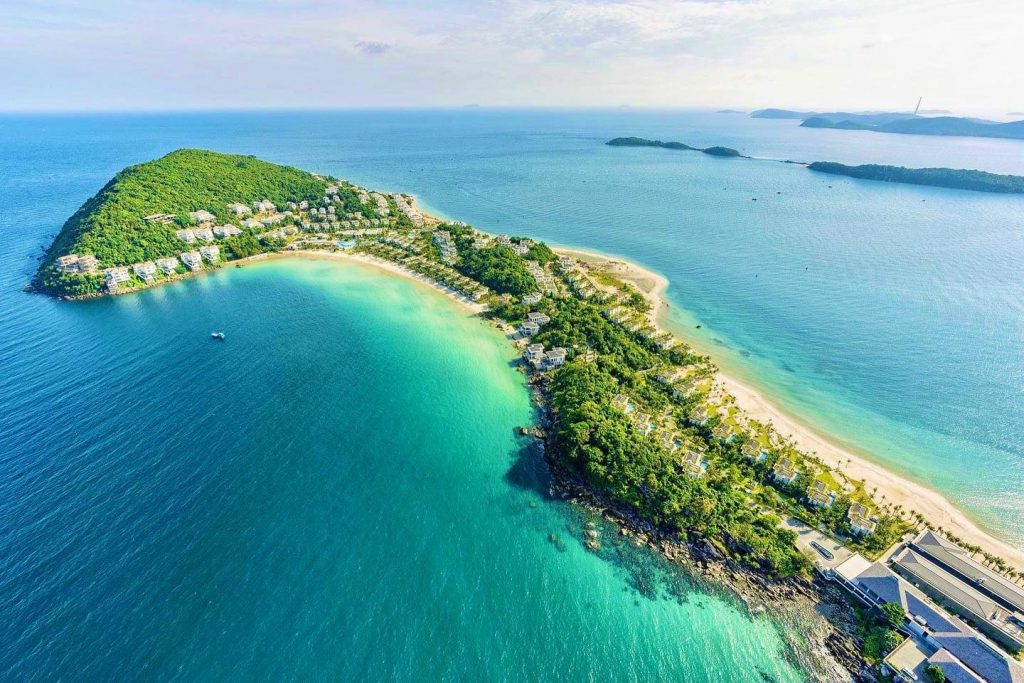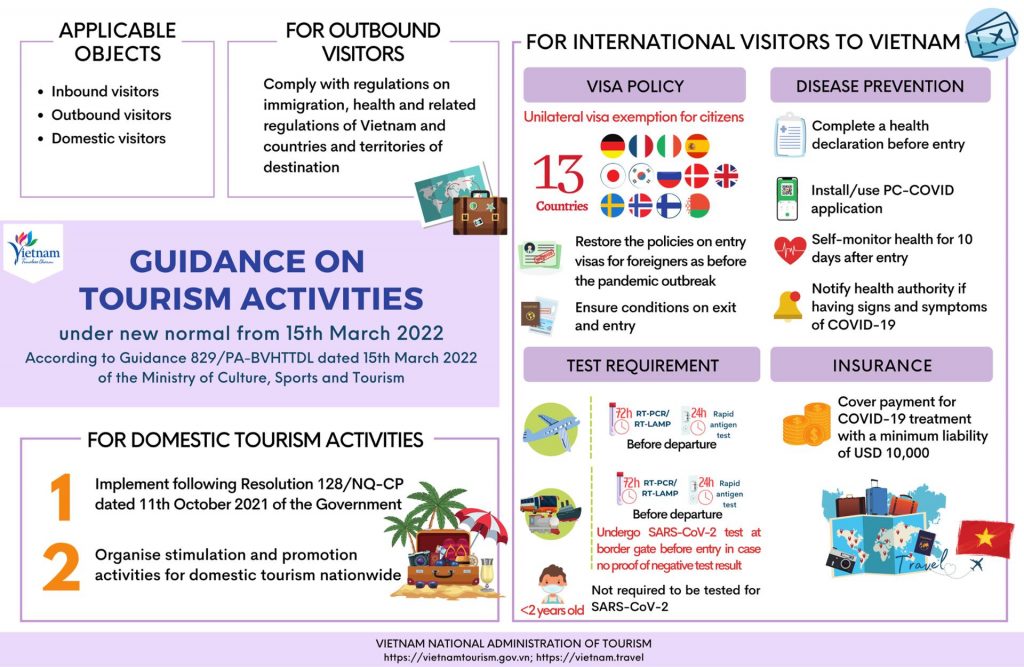Contents
3 phases of Vietnam – Phu Quoc island reopening roadmap with vaccine passports
First phase (From 20 November 2021)
The pilot plan will be applied to those who join package tours via charter and international commercial flights to Phu Quoc. They can visit selected service areas and establishments in Phu Quoc island.
Second phase (From Jan to 14 Mar. 2022)
The range of international visitors will be expanded and destinations will be connected through charter and regular international commercial flights.
After completing a seven-day tour program in Phu Quoc, tourists can participate in programmes that combine multiple destinations in Ho Chi Minh City, Binh Dinh, Quang Nam, Khanh Hoa (Nha Trang), Da Nang, Quang Ninh (Ha Long Bay), . Other localities might be added when they meet all conditions to welcome international guests.
Third phase (Fully reopen)
The international tourist market will be fully reopened. The starting time of this phase will be based on the COVID-19 pandemic situation and the results attained after welcoming international tourists in the first two phases.

LIVE FULLY IN VIETNAM
Vietnam fully reopens the borders from 15 March, 2022

Vietnam Ministry of Health has officially issued the long-awaited COVID-19 protocols for foreign arrivals in Vietnam.
The regulations state that visitors with negative COVID tests can enjoy quarantine-free travel from day one.
BEFORE ENTER VIETNAM
Vietnam’s Ministry of Health on March 15 released COVID-19 entry procedures for foreign arrivals as per Document No 1265/BYT-DP.
As per the Document, foreign arrivals are required to:
1. Travellers entering Vietnam via air routes will have to present proof of negative SARS-CoV-2 tests (except for children under two years old) done within 72 hours prior to departure in cases of RT-PCR/RT-LAMP or within 24 hours in cases of rapid antigen tests, and the results must be certified by the authorities of the country where the tests are conducted.
People entering via road, sea, and rail will be subject to the same requirements.
2. If arrivals cannot show proof of negative tests, they are required to take a test (either using RT-PCR/RT-LAMP method or rapid antigen tests) in the first 24 hours from the time of arrival.
If the results are negative, they may travel outside of their place of accommodation, with public health measures still in place, if the results are positive, they must notify health authorities for further instructions.
3. Children under two years old are not required to take COVID-19 tests, and they can still enter Vietnam and take part in activities outside of the place of accommodation with their parents or relatives even if they have not been vaccinated against COVID-19 or contracted the virus before.
4. Arrivals must make medical declaration before entering and use Vietnam’s COVID-19 mobile application (PC-COVID, available on both iOS and Android) during their entire stay according to regulations.
AT THE BORDER GATE
If one shows symptoms of SARS-CoV-2 infection (fever; cough; sore throat; runny nose, stuffy nose; body aches, fatigue, chills; reduced or loss of taste; reduced or loss of sense of smell; headache; diarrhoea; breathing difficulties; respiratory infection, etc.), they must immediately notify the health agency at the border gate to take medical measures as regulated.
DURING THE STAY
No mandatory quarantine is required, but in the first 10 days after entry, people should self-monitor their health and if any symptoms develop, ask for assistance from the nearest medical facilities.
Visitors are asked to frequently wear masks and disinfect their hands.
People without negative COVID-19 results prior to entry are asked to not make rest stops and make contact with other people along the way from the border gate to their place of accommodation.
Vietnam visa policy for foreigners
The guidelines, released the day after the country fully reopened international tourism activities and reinstated pre-pandemic entry and exit regulations, replaced all other previous COVID-19 rules for foreign entries.
- The e-visa government website link is now open for visa submissions.
- Vietnam officially resumes unilateral visa exemption for arrivals from 13 countries and territories including Belarus, Denmark, Finland, France, Germany, Italy, Japan, Norway, Russia, South Korea, Spain, Sweden, and the U.K. Citizens from 13 countries will be allowed to visit Vietnam for up to 15 days without a visa regardless of passport type and entry purpose.
- Visitors from most other ASEAN countries do not require a visa for up to 30 days. The waiver was for 21 days for visitors from the Philippines and 14 days for those from Brunei and Myanmar.
Vietnam starts to reopen borders for international tourism under the new normal conditions today, from March 15, 2022. This is an important milestone for the Vietnamese tourism industry to revive after 2 years of closure due to Covid-19. We can’t wait to welcome foreign travelers to Vietnam.
With these new COVID-19 guidelines, international visitors entering Vietnam will be “treated the same way” as domestic visitors, as Deputy Prime Minister Vu Duc Dam has promised late March 15.